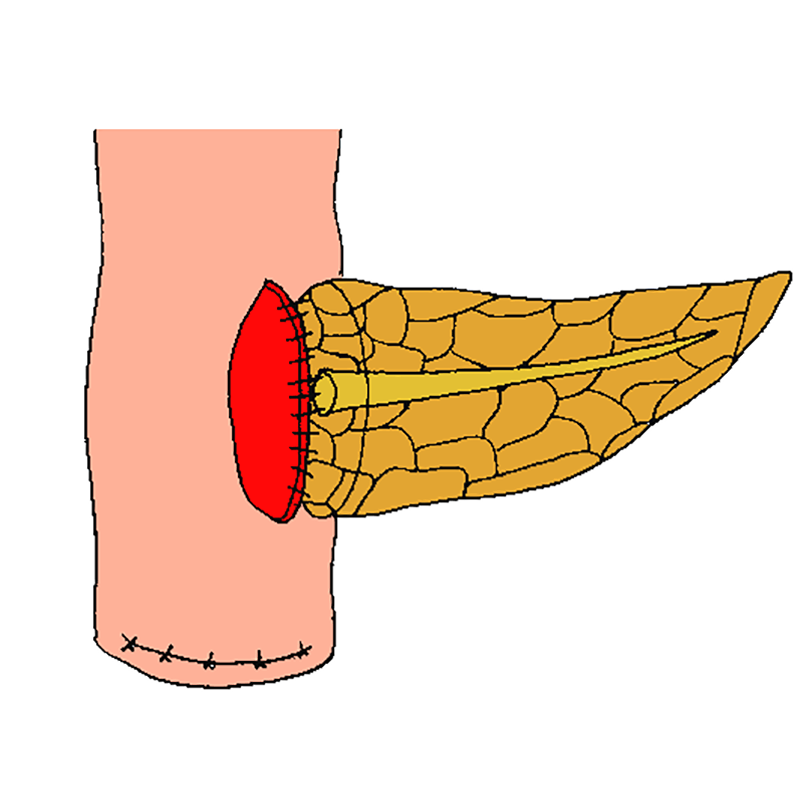An incision is made in the jejunal side wall with a size that matches the diameter of the pancreatic stump. At least three stitches are preplaced in both the posterior and anterior walls of the main pancreatic duct. The inner suture-row is circumferentially performed between the full-thickness of the jejunum and the pancreatic parenchyma of the cut edge; the six formerly placed ductal sutures are integrated in the posterior and anterior parts of the inner suture-line (respectively three in the posterior part and three in the anterior part).
Duct-to-mucosa adaptation two-layered invagination end-to-side pancreatojejunostomy
- An incision is made in the jejunal side wall with a size that matches the diameter of the pancreatic stump.
- At least three stitches are preplaced in both the posterior and anterior walls of the main pancreatic duct.
- The inner suture-row is circumferentially performed between the full-thickness of the jejunum and the pancreatic parenchyma of the cut edge; the six formerly placed ductal sutures are integrated in the posterior and anterior parts of the inner suture-line (respectively three in the posterior part and three in the anterior part). Consequently, a mucosa-to-mucosa adaptation between the jejunum and the pancreatic duct will be generated, as well as an adaptation between the edges of the incised jejunum and the surface of the transected pancreatic parenchyma.
- The anastomosis is completed by a circumferential outer suture-row between the pancreatic capsule and the seromuscular layer of the jejunal wall.
- You D, Jung K, Lee H, Heo J, Choi S, Choi D. Comparison of different pancreatic anastomosis techniques using the definitions of the International Study Group of Pancreatic Surgery: a single surgeon’s experience. Pancreas. 2009;38:896-902.





